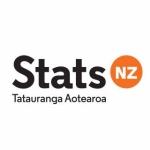Annual wage rates grow 1.8 percent
Labour cost index (LCI) salary and wage rates, which include overtime, increased 1.8 percent in the year to the December 2012 quarter, Statistics New Zealand said today. This includes a 0.5 percent rise in the December 2012 quarter.
Salary and ordinary time wage rates in the private sector increased 1.9 percent in the year to the December 2012 quarter. Public sector salary and ordinary time wage rates rose 1.5 percent, up from 1.4 percent in the year to the September 2012 quarter. The latest annual wage rate growth in the public sector resulted from increases in the central government sector (up 1.4 percent) and local government (up 1.9 percent).
The mean increase for all surveyed salary and wage rates that rose in the December 2012 quarter was 3.0 percent, compared with 3.1 percent in the September 2012 quarter. The latest mean increase is the lowest since a 3.0 percent increase in the September 2000 quarter. Of all pay rates surveyed, 55 percent showed annual increases in the year to the December 2012 quarter.
Results from the Quarterly Employment Survey (QES), also released today, showed that average hourly earnings for ordinary time (ie excluding overtime) rose 2.6 percent in the year to the December 2012 quarter. This followed a rise of 2.8 percent in the year to the September 2012 quarter.
The QES results also showed that demand for labour and paid hours rose for the December 2012 quarter after adjusting for seasonal fluctuations. The number of filled jobs rose 0.4 percent from the previous quarter. Full-time jobs rose by 0.7 percent while part-time jobs fell 0.6 percent. The overall result of these movements was a 0.4 percent rise in full-time equivalent jobs (FTEs). Seasonally adjusted total paid hours rose 0.6 percent over the same period.
The LCI tracks nearly 6,000 jobs and reflects changes in the rates that employers pay to have the same job done to the same standard. Rises to match the market, retain staff, or reflect the cost of living are shown in the LCI, while rises reflecting individual performance or years of service are filtered out.
The QES surveys approximately 18,000 business locations and reflects New Zealand employers' demand for paid labour. From the survey responses, we estimate the levels and changes in employment, gross earnings, and paid hours in the industries we survey. These estimates are then used to calculate average earnings and paid hours statistics.
See also:
Labour Cost Index (Salary and Wage Rates): December 2012 quarter – Information release
Quarterly Employment Survey: December 2012 quarter – Information release
